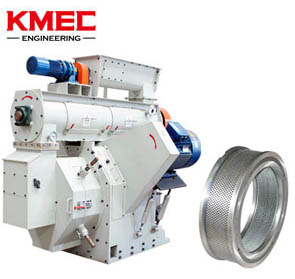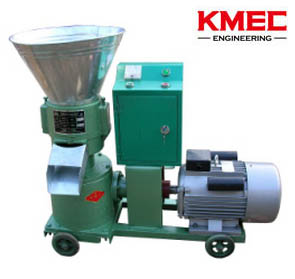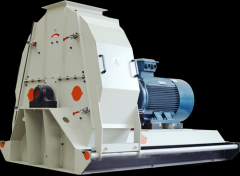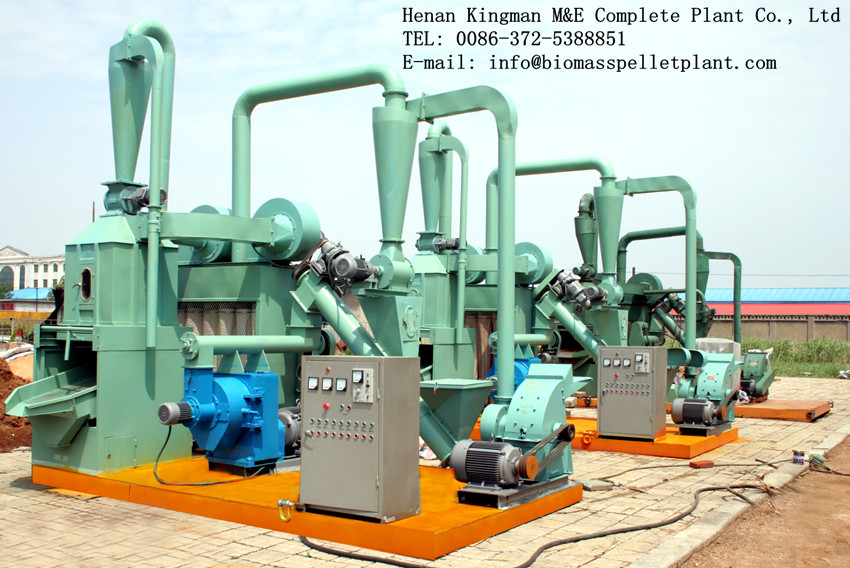Development history and present situation of compression mold
Research on compression molding technology of biomass pellet fuel was originated from the beginning of 20 century. So far, countries all of the world focus on the research of manufacturing technology of biomass mold fuel (biomass pellet mill) and the development of relevant stoves.
Early in the thirties of the last century, USA began to research on technology of compression molding fuel and manufacture screw type briquette machine, ring die pellet mill and so on, which can compress the sawdust and wood shavings into solid fuel under high temperature of 80-350℃ and 100pa pressure. Japan improved the advanced technologies introduced from abroad and developed its own industrial system of compression molding fuel. In the late 70, many western countries like Belgium, France and German etc, began to pay attention to the research of compression mold fuel technology. In France, straw pellet was used as milk cow feed. Recently, they began to research on compression molding fuel either. German developed and manufactured the KAHI serial pellet mill and RUF briquette equipment. In Asia except Japan, Thailand, India and the Philippines etc, developed and manufactured the biomass compression mold machine with the help of bonder successively. China devoted to research on biomass compression molding technology from 1980s. And now the production and applying of compression molding technology have shaped a certain scale in china. The hot issue focused on screw type compression mold machine, but it had the disadvantages of serious wear of mold cylinder and screw shaft, short service time, high power consumption and simple technology of mold and so on. So, it is necessary to pay more attention to the technology research and overcome the challenges, to extent the promotion and application of the technology of biomass compression mold fuel.
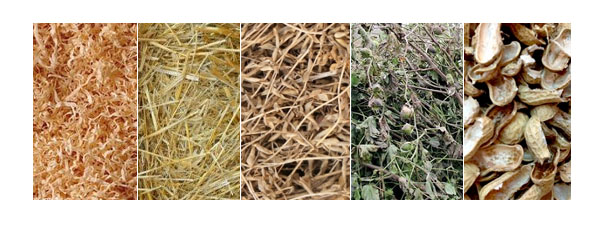
There are several factors which affect the compression molding, including material type, moisture content, particle size, compress pressure, shape and size of mold and heating temperature and so on. These factors are demonstrated in different forms under different compress conditions.
1.Types of material
Various types of materials have different characters of compress and mold. For example, the waste woody material is difficult to compress; plant of straw and tree bark with plenty of fibers are easy to compress. Without the help of heating, materials which are difficult to compress are difficult to mold, while the material which are easy to compress are easy to mold. But under the condition of heating, the waste woody material which are difficult to compress, has high lignin content, are easy to mold under high temperatures instead. But for straw of plant and tree bark, the material has weak bonding capacity, which is difficult to mold.
2.Particle size of raw materials
In general, the smaller the particle sizes of raw material, the easier it is to mold. The bigger the particle sizes of raw material, the more difficult it is to mold. The particle sizes affect the efficiency of compress mold machine and quality of finished products. For example, when the particle size is bigger, the pellet mill can not work efficiently with high power consumption and low production; when the particle size of raw material are not in uniformity, the finished products are cracked in appearance with small density and small strength.
3.Moisture content of raw material
When the degree of moisture content is high, vapor can not expel out from the center hole of mold fuel during the heat process, sometimes, the fuel has fractures on the appearance and the appearance is very tough, or it happen to louder pop; when the moisture content is lower, it’s difficult to form. In general, for making pellet fuel, the required material is about 15%-25%; for briquette fuel, the required moisture content is below 10%.
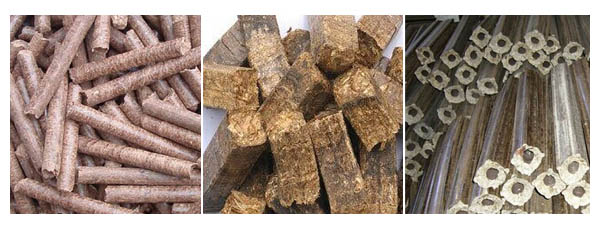
4.Compress pressure and size of mold
Compress pressure is the most basic condition of compress and mold the biomass raw materials. As long as the compress pressure is enough, the raw material can be compressed and molded, and the compress pressure is closely contacted with the sizes of mold. That’s because of the molding pattern of biomass pellet mill is extruding, materials are compressed by the side of mold successively, and extruding out from the other side (diameter of discharging material is bigger than diameter of feeding material). At this time, required pressure of extruding the material is equal to the friction force from the inside of the container, while the friction force is related with the size of the mold.
5.Heating temperature
After heating process, on the one hand lignin content in the raw material are soften as the bonder, on the other hand, the soften material are easy to compress. For the general machine which produce pellet or briquette fuel, the heating temperature is 150℃~300℃ at best. Low temperature are bad for mold with increasing power consumption; high temperature give rise to low power consumption and the pressure is not enough for mold, the finished products are weak with low density, easy to crack, or the outlook of the finished products are burning with heavy smoke.
----------------------------------------------------------------------------------------------------------------------------------------------
KMEC is one of the best wood pellet mill manufacturers in China which provide full set of process design wood pellet mill plants, including sifting, crushing, drying, mixing, pellet, cooling, dedusting, package and so on, with the feature of easy operation, stable performance and simple maintenance.
Kingman boasts a professionally excellent straw pellet machine manufacturer and pellet plant manufacturer.Straw refers to the general term of a variety of fringe and stem of agro plants such as wheat, maize, paddy, cotton and so forth.The product of photosynthesis is mostly processed within the stem and fringe parts of agro plants Actually, Straw also lavishly possesses nitrogen, phosphorus, potassium, calcium and other organic ingredients.
The XCT small pellet plant, also called moveable pellet plant features positioning flexibility, compacted structure and stable performance as a whole to facilitate transportation and storage. It is designed and manufactured preferably for clients who intend to put a pellet plant into production yet with a relatively low yield due to limited raw material supply or because of unfixed working positions for pelletization.
News
- Small Pellet Machine Manufacturer-Kingman
- Application of Wood Pellets and Use of Biomass Pellets
- From Fossil Fuel into Biomass Pellet Fuel
- Biomass Pellet Making Machines Market
- Applying of pellet stoves for home use
- Highland pellets to build $130 million facility in arkansas
- How to deal with the blocked hammer mill
- How to Make Wood Pellets with Sawdust
- The government policy promotes the development of biomass fuel
- Market analysis of biomass pellet fuel
- Strategic positioning of renewable energy
- Biomass energy has pass through the pre assessment
- The key point of deep processing of biomass pellet
- Harbin is promoting the development of biomass machinery
- The development of biomass formation technology I
- The development of biomass formation technology II
- Biomass energy industry is now going full tilt in 2015
- Rapid increasing demand of sawdust pellet on the market
- Pellet fuel market in EU
- Chinese Biomass Energy Conference held in Beijing
- Future market development of straw pellet mill
- Peanut Shell Pellet Mill Makes High Quality Pellets
- The utilization of straw is only 5%, biomass energy needs our attention!
- Corn straw pellet machine relieves the tight supply of fuel energy
- Reasons for loose or not forming of biomass pellet mill

